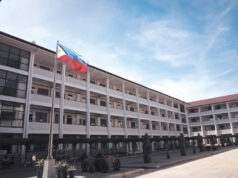The near future of Philippine office space
Owing to the country’s continued economic growth, powered by growing consumption and ongoing infrastructure development, the Philippines is on the fast track towards prominence among investors in Southeast Asia. In terms of real estate, this could not be truer.
While the Philippines has experienced spikes in inflation for 2018, prices in the property market have not detracted investors from securing prime locations across the country. Many developers have started offering flexible workspaces, master-planned communities, and eco-friendly retail spaces to cater to the changing tastes of the market, finding new opportunities to provide for the Filipino middle class as well as the international investor. These new trends are shaping the future of Philippine real estate, physically transforming the country’s cities and districts towards the future.
“For the Philippine property market in 2019, flexibility will be the name of the game,” global real estate services firm Colliers International wrote on its Top 10 Forecast for 2019.
“The strong demand and evolving preference of tenants is giving rise to flexible workspaces; residential developers are tweaking their projects to cater to Chinese offshore gaming employees and local professionals; and mall operators are more open to foreign food and beverage (F&B) and home furnishing tenants, which we see redefining retail space absorption in 2019. Developers are also cashing in on the thriving property market by aggressively acquiring parcels of land outside of the more established business districts.”
According to Colliers, the property sector remains resilient amid the slower economic growth in the first nine months of 2018, with major segments like office space poised for record-high demand and supply for the year.
Colliers forecasted that for office properties, this means an additional supply of nearly one million square meters (sq.m.) and a net take-up of 900,000 sq.m. in 2019, resulting in 5.3% of vacancy by the end of the year. Flexible workspaces and newer preferences in office space are driving demand for the year, but as tight vacancy looms into 2019, rents are projected to rise by an estimated 9%.
“Coupled with the emergence of a mobile work force and firms’ drive to bring down operating costs, the tight Metro Manila office market has given rise to another office sub-segment — flexible workspace. We see Manila’s flexible workspace stock expanding by at least 10% per annum over the next three years owing to the continued rise of micro, small, and medium enterprises (MSMEs); the influx of multinational corporations (MNCs) and outsourcing firms looking for plug-and-play offices; and the implementation of a set of policy reforms likely to improve the business climate,” the report said.
“Due to stiff competition in the market, we see flexible workspace operators differentiating their features. A number of operators are already incorporating yoga and art classes, gyms, and food and beverage outlets. We believe that co-living is another feature that flexible workspace operators in Manila should consider in 2019. Over the next three years, we expect more flexible workspaces to be offered in malls, hotels, and dormitories for professionals.”
Another factor that contributes to the continued resilience of the office space market is the ongoing expansion of the Philippine property market beyond Metro Manila. Investments in emerging cities are pushing property buyers outward, towards hotspots like Clark Freeport Area, and Cebu, among others.
Offshore gaming companies, which played a huge role in the demand for office space in 2018, are now expanding to these emerging hotspots. Colliers forecasted that such companies will look to take locations in Cebu, Pampanga, and Laguna, where large office spaces remain available.
“A number of offshore gaming firms that have secured licences from the Philippine Offshore Gaming Office and permits from city and local governments are looking for additional space. Initially operating in the Bay Area, these companies have started to operate in other Metro Manila business districts,” the report said.
“These firms have also started to take up office space in key cities outside Manila such as Cebu, Laguna, and Clark in Pampanga. Aside from expansive office space and residential availability, offshore gaming companies need to operate in cities that have airports offering direct flights to China or areas that have direct access to and from Manila. This is one of the reasons why these firms are starting to look at a number of cities in Southern Luzon.”
As of end-September 2018, offshore gaming firms occupied a total of 280,000 sq.m. (3 million sq.ft.) of office space, accounting for 25% of total space absorbed in Metro Manila during the period. For 2019, Colliers sees offshore gaming firms occupying between 200,000 sq.m. (2.2 million sq.ft.) to 300,000 sq.m. (3.2 million sq.ft.) of office space, representing about 20% to 23% of the projected net take-up in 2019.
Ultimately, as infrastructure development remains one of the primary drivers for growth in the property sector, the government’s timely completion of its multibillion-peso infrastructure program will easily define the industry’s landscape in the near future. Cebu, in particular, is on the map for many locators, as the key city begins to see the results of improved transportation and infrastructure connectivity.
“Over the next 12 months, we see property firms taking a more aggressive approach in exploring parcels of developable land especially in the Mandaue and Mactan areas that will benefit from the completion of major infrastructure projects such as the expanded Mactan-Cebu International Airport; the Cebu Cordova Expressway Link; Cebu Bus Rapid Transit (BRT); and the Cebu-Negros bridge,” the report said. — Bjorn Biel M. Beltran



